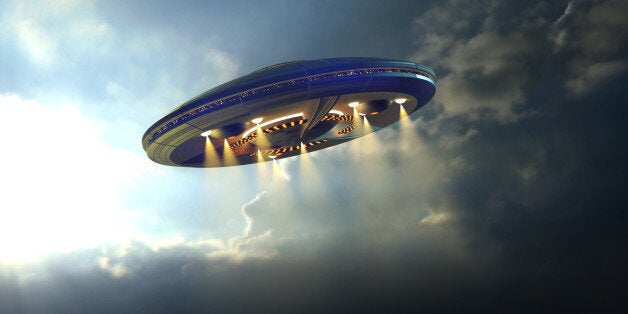
The trailer has dropped for 'Arrival,' and it is already being hyped as the science-fiction event of 2016. The plot hinges on the appearance of monolith-esque spacecraft in the sky, and linguist Amy Adams' mission to find a way to communicate with these extra-terrestrial newcomers. Part of the film's appeal comes from its attempts to take a somewhat realistic approach to some pretty trippy subject matter, 'Interstellar'-style.
So if aliens really did land tomorrow, how would we, as human beings, make ourselves understood? Verbal communication would probably be out of the question; after all, this new species would have evolved in an entirely different way to us. They might not even have mouths. 'Arrival' posits that written language might hold the key to communication; but which one? English? Spanish? Mandarin? Arabic? Surely there is a case to be made that our first contact with alien life be visual.
Drawing simplistic round faces is how earthling children learn about emotions and facial cues. It makes sense, then, to start in the same place with any little green visitors who drop in.
Which brings us to the humble emoji.
Just as ancient civilisations told their stories through pictograms and hieroglyphs, now the quickest way to convey an emotion or state of mind is through the heart-eyes emoji, or the crying-laughing emoji... or the poop emoji. Emoji provide a visual language that transcends nationality or culture.
"That the 'language' is so universal and recognisable is due in large part to the Unicode Consortium, the group of major tech companies in charge of defining and approving new emoji," writes Andrew Cunningham. "Every year it proposes, discusses and approves new additions to the language, and that heavyweights like Apple, Google and Microsoft have become so diligent about supporting new versions is a rare victory for standards in an age where every tech company on Earth is trying to lock you into its own proprietary silo."
There have been some key variances in how certain emoji are displayed from device to device, such as Apple's handgun, which now appears as a water pistol. Cunningham fears that, should these variations continue, we will end up with multiple strands of incompatible emoji dialect. But surely if we are to present a united front to our new intergalactic friends, we need to iron out such fragmentation?
According to Jeremy Burge, founder of Emojipedia, we needn't worry much. "The varied appearance of emoji on different platforms I see as a lesser issue in 2016 than it has been in the past, and an issue that is slowly resolving itself as platforms look to one another for cues on consistency," he says.
As the popularity of emoji has grown, so has their diversity, with more recent upgrades including a wider choice of ethnicities and different combinations for families -- a fitting primer in the human race, you might say.
This article originally appeared at Ogilvydo.
